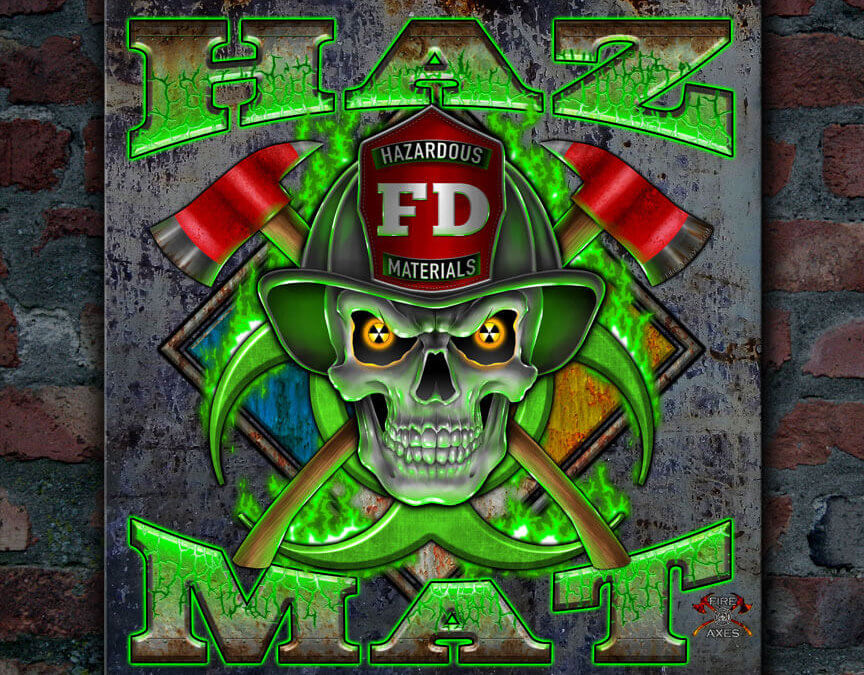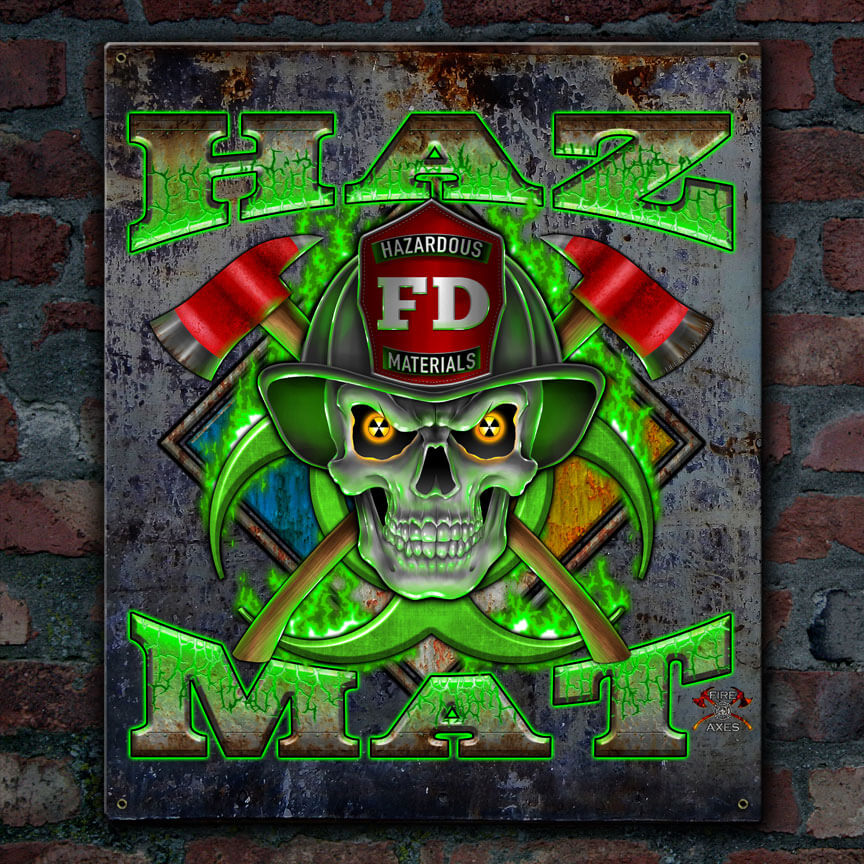Now we get to play with really fun toys as a firefighter like a HAZMAT suit. It’s not enough we get to drive clean as a whistle red fire engines down city streets and all across the highways and freeways of America but now we get to throw on a silvery bunny suit, fend off Martian attackers, taking a spacewalk and more. But in all seriousness it’s not only one of the hardest and most rewarding careers to choose from but when you get to don your hazardous materials suits it gets even better. Hazmat!
Hazard Materials represent substances — which may be natural or man-made — that are inherently dangerous or pose a safety hazard. A truck carrying chemicals on a busy city street gets hit. The truck explodes and the chemicals are strewn all over the street and sidewalk. Its instances like this that Hazmat professionals are called upon to inspect, clean and protect the area so others cannot be harmed.

Examples include materials which are explosive, poisonous, chemically active (including acids and other corrosives), radioactive, or biologically active (including human blood and other medical waste).
Hazmat teams are specially trained to handle such dangerous materials.
In the United States, dangerous goods are often indicated by diamond-shaped signage on the item (see NFPA 704), its container, or the building where it is stored.
HAZMAT SUITS
The United States Department of Homeland Security defines a hazmat suit (hazardous materials suit) as “an overall garment worn to protect people from hazardous materials or substances, including chemicals, biological agents, or radioactive materials.”
More specifically, hazmat suits are used by the following:
- Firefighters
- Emergency medical technicians
- Paramedics
- Researchers
- Toxic spill workers
- Contamination clean-up specialists
These suits are worn as personal protective equipment (PPE) that consist of an impermeable whole-body garment to provide security against hazardous materials and are often combined with self-contained breathing apparatus (SCBA) to ensure a supply of breathable air.
More generally, hazmat suits may provide protection from:
- Chemical agents
- Nuclear agents
- Biological agents
- Fire/high temperatures
Working in a hazmat suit can be strenuous, as the suits tend to be less flexible than conventional work garments. With the exception of laboratory versions, hazmat suits can be hot and poorly ventilated (if at all). Therefore, use is usually limited to short durations of up to 2 hours, depending on the difficulty of the work.
Hazmat protective clothing is classified as any of Level A, B, C, or D, based upon the degree of protection they provide.
LEVEL A
The highest level of protection against vapors, gases, mists, and particles is Level A, which consists of a fully encapsulating chemical entry suit with a full-facepiece self-contained breathing apparatus (SCBA). A person must also wear boots with steel toes and shanks on the outside of the suit and specially selected chemical-resistant gloves for this level of protection. The breathing apparatus is worn inside (encapsulated within) the suit. To qualify as Level A protection, an intrinsically safe two-way radio is also worn inside the suit, often incorporating voice-operated microphones and an earpiece speaker for monitoring the operations channel.
LEVEL B
Level B protection requires a garment (including SCBA) that provides protection against splashes from a hazardous chemical. Since the breathing apparatus is sometimes worn on the outside of the garment, Level B protection is not vapor-protective. Level B suits can also be fully encapsulating, which helps prevent the SCBA from becoming contaminated. It is worn when vapor-protective clothing (Level A) is not required. Wrists, ankles, facepiece and hood, and waist are secured to prevent any entry of splashed liquid. Depending on the chemical being handled, specific types of gloves and boots are donned. These may or may not be attached to the garment. The garment itself may be one piece or a two-piece hooded suit. Level B protection also requires the wearing of chemical-resistant boots with steel toes and shanks on the outside of the garment. As with Level A, chemical-resistant gloves and two-way radio communications are also required.
LEVEL C
Level C protection differs from Level B in the area of equipment needed for respiratory protection. The same type of garment used for Level B protection is worn for Level C. Level C protection allows for the use of respiratory protection equipment other than SCBA. This protection includes any of the various types of air-purifying respirators. People should not use this level of protection unless the specific hazardous material is known and its concentration can be measured. Level C equipment does not offer the protection needed in an oxygen deficient atmosphere.
LEVEL D
Level D protection does not protect the person from chemical exposure. Therefore, this level of protection can only be used in situations where a person has no possibility of contact with chemicals. A pair of coveralls or other work-type garment along with chemical-resistant footwear with steel toes and shanks are all that is required to qualify as Level D protection. Most firefighter turnout gear is considered to be Level D.
TYPES OF HAZARDOUS MATERIALS
As defined by the United Nations, there are nine separate classes of hazardous materials, which include:
Class 1 – Explosives
Class 2 – Gases
Class 3 – Flammable Liquids
Class 4 – Flammable Solids
Class 5 – Oxidizing Substances and Organic Peroxides
Class 6 – Toxic Substances and Infectious Substances
Class 7 – Radioactive Materials
Class 8 – Corrosive Substances
Class 9 – Miscellaneous Hazardous Materials
What do hazmat firefighters do?
Their role is to secure an incident site, identify the materials involved and make the appropriate requests for additional resources. Some law enforcement personnel, EMS crews and volunteer firefighters are trained to the awareness level.
One of the many firefighter jobs is the role of a Hazmat expert. Hazmat is so important that we needed to address it as part of the firefighting community. So within the firefighting community you have to be seriously trained in HAZMAT techniques, suits, roles and responsbilities, classifying and destroying the checmicals involed in a materials accident. We can;t have Blinky swimming into the neighbors pipes if not contained properly.




